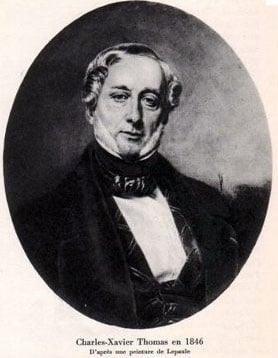
4 Facts about the Arithmometer of Thomas de Colmar
- Thomas de Colmar’s arithmometer was the first commercially successful calculating machine.
- The inventor, Thomas de Colmar, was a contemporary of Charles Babbage, who created more complex and less commercially successful mechanical calculators.
- The arithmometer was capable of multiplication, three-digit inputs, and six-digit results.
- Also known as the Thomas machine or Thomas arithmometer, the device was built upon to create the Saxonia, Peerless, and other historic mechanical calculator inventions.
Arithmometer History
During his lengthy stay with the armies of Marchall Soult, where he needed to perform a great deal of calculations, Charles-Xavier Thomas de Colmar conceived the idea of the arithmometer. Its uses became even more apparent when, in 1819, he was appointed general manager of the Phoenix Insurance Company and, later, when he founded the insurance companies Soleil (Sun) and Aigle (Eagle).
Of course, others had tried before him, including Schickard, Pascal, Leibniz, Morland, Hahn, Stanhope (Hahn tried to mass-produce his machines, without success). But these machines, often defective and very expensive, were impossible to commercialize. In the middle of the 19th century, with the Industrial Revolution, technological trammels dropped out. More and more enterprises, scientific, military, and government institutions became eager to accept and use calculators.
Quick Facts
- Created
- 1820
- Creator (person)
- Thomas de Colmar
- Original Use
- Complex calculations in the insurance industry
- Cost
- 500 Francs
Thomas’s arithmometer was first made public in 1820 when he was granted a five-year patent for his calculating machine. The mechanism was based on the stepped drum mechanism of Leibniz. It is clear however that the patent represents only a transient prototype, on which Thomas was still actively working. By 1821, when he was ready to submit an example to the scrutiny of the Société d’encouragement pour l’industrie nationale, the design was significantly improved upon.
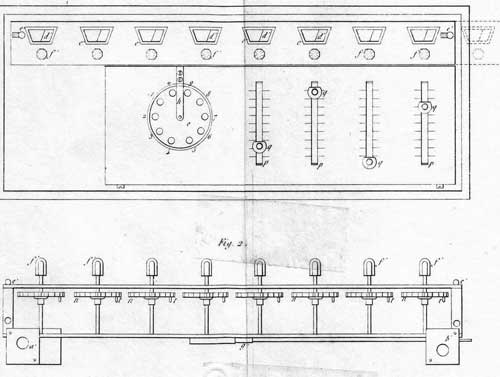
In 1821 Thomas de Colmar submitted to the Sociėtė d’Encouragement in Paris the first copy of the calculating machine he had constructed (which he called an arithmometer), manufactured by the Parisian mécanicien and clockmaker, Devrine. From 1822, when the production started, until 1878, about 1,500 arithmometers were manufactured.
The last models cost 500 francs, a serious sum at the time. In his promotional book of 1855, however, Jacomy-Régnier announced that Thomas had spent 300,000 francs on developing the arithmometer, compared to Leibniz’s reputed costs of 100,000 francs and Babbage’s notorious government subvention of £17,000 (approximately 425,000 francs).
The series production started really only about 1851 and finished around 1914. The Thomas workshop completed 500 machines from 1821 to 1865, 300 machines from 1865 to 1870, 400 machines from 1871 to 1875, and 300 machines from 1876 to 1878.
More than 5,000 calculating machines were manufactured during these 90 years, with 40% of the products sold in France and the remainder intended for export. In fact, up to the time when the calculating machine industry was introduced into Germany by Arthur Burkhardt (1878), the Thomas’ workshop was the only firm in this line and supplied the whole world with its products.
Arithmometer: How It Worked
The 1820 machine had a ribbon to pull (instead of a crank as in later models), a second set of result displays for subtraction and division, and a multiplication gear, set by the first slider from left, which allowed the “multiple add” by one “pull” and actually showed the number of the revolutions of the calculating mechanism. It had a three-digit capacity in the input mechanism and a six-digit capacity in the result mechanism. It only had the clearance of the single result digits.
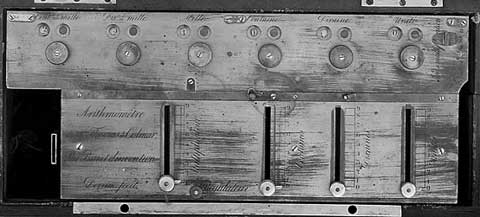
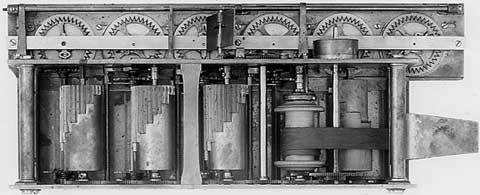
In the second model of 1848, the complex and unreliable movement mechanism with ribbon was replaced by a crank at the front side, which could be rotated in two directions according to the value of the particular digit in the multiplier/divisor. It still had the multiplication gear.
The second set of result displays is gone, the switch from addition and multiplication to subtraction and division was done by a lever. Internally, the stepped drum was reduced from 18 to nine teeth. The capacity was increased to five digits in the input mechanism and 10 digits in the result mechanism. Every digit position was shown in one window because switching between multiplication and division was done by means of the lever placed to the left of the multiplication lever. This changed the direction of the carry from the calculation to the result mechanism to improve its range of uses.
In the third version of the machine, created in 1858, the main improvement was the second counting mechanism without a tens-carry (revolution counting mechanism), which simplified multiplication and division. The machine was also provided with one zero-setting device that acted on all the windows of the result mechanism and another for all the windows of the revolution-counting mechanism. Previously, all the numeral disks had to be set to zero individually by turning knobs placed below the individual windows. The zero-setting device was in the form of a rotating knob that is turned to the right until all the windows of the respective numeral mechanisms show zero. The zero-setting device of the result mechanism was mounted on the right side of the upper surface of the carriage, whereas the zero-setting mechanism of the revolution-counting register was arranged on the left.
In the fourth model of 1878, the setting slides were provided with small springs, which, when the slide has been set to a certain digit, caused the slide to slip into a notch opposite that digit so that an accidental movement of the setting knob during operation of the crank could be avoided. The tens-carry mechanism was materially improved. Means were provided to prevent overthrow.
Arithmometer: Historical Significance
Thomas presented the arithmometer to a number of exhibitions. In 1844, his machine was entered in the French National Exhibition of Industrial Products where it was classed amongst precision instruments in a category of diverse measures, counters, and calculating machines. If Thomas had hoped for substantial recognition and reward, he was to be disappointed. The arithmometer was granted an honorable mention in the jury report but was clearly considered inferior to the submission of the Austrian emigré doctor Didier Roth, who obtained a bronze medal for his adding and calculating machines and counters. The judgment of the 1844 jury was mirrored in the coverage given to Roth in a separate guide to the exhibition’s highlights, in which Roth’s adding machine was described and illustrated, while the arithmometer was ignored.
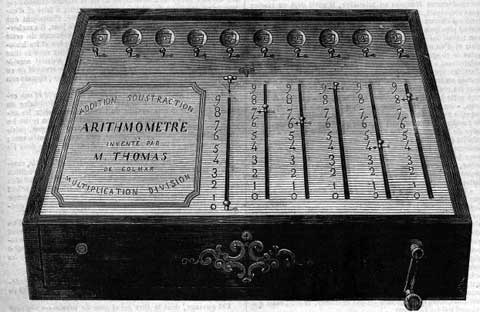
The next French national exhibition took place in 1849. Thomas again tried his luck. He was awarded a silver medal and the jury report devoted three pages to his machine. Despite this higher honor, he was again eclipsed, for a gold model went to the mechanicians Maurel and Jayet for their Arithmaurel, a calculating machine with automatic capabilities judged to exceed those of the arithmometer.
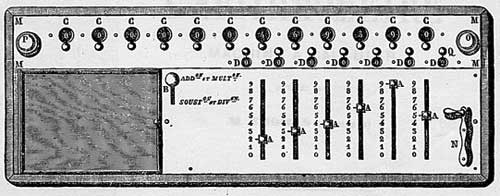
A further competitive opportunity was soon offered by the 1851 Great Exhibition. But again, Thomas was frustrated. The arithmometer was one of two calculating machines to receive a prize medal, but the jury decided that it was inferior to a Russian entry devised by Staffel, originally a watchmaker from Warsaw. The arithmometer was illustrated in the official catalog, but it was Staffel’s calculator, already successful at a Polish exhibition and rewarded in St Petersburg, which was featured in the Illustrated London News.
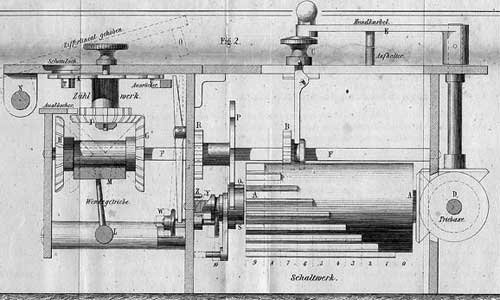
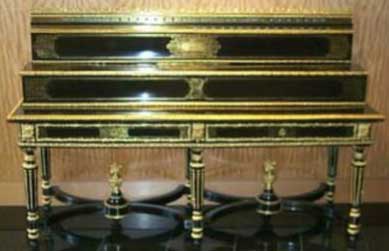
The Thomas machine was the basis of many other machines. It helped inspire the work of Burkhardt, Bunzel, Saxonia, Austria, Tate-Layton, Peerless, TIM, and Archimedes, among others.

